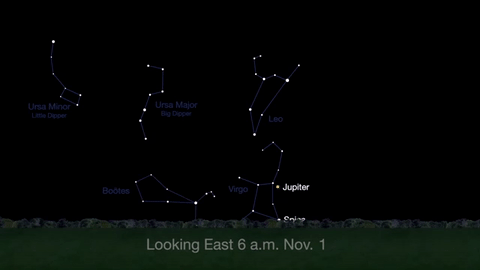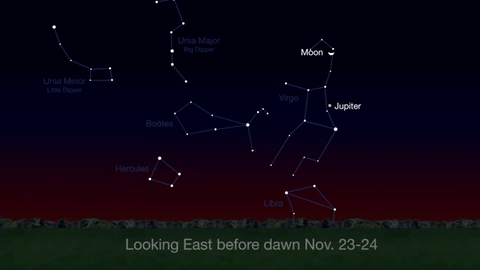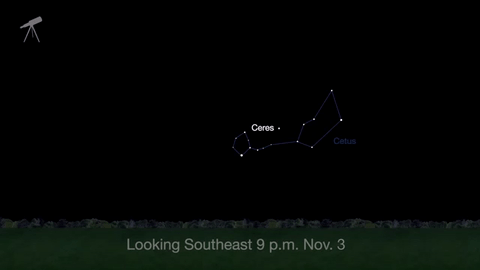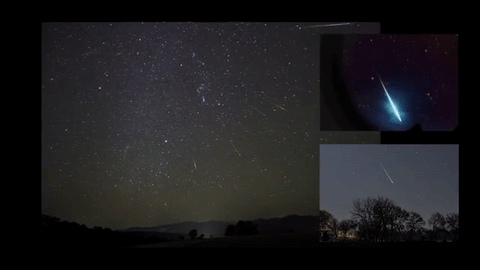This Is The Beauty Of Space
This is the beauty of space
Holiday Lights from the Universe
Although there are no seasons in space, some cosmic vistas invoke thoughts of a frosty winter landscape. Here are a few stellar images of holiday wonderlands from across the galaxy…

Located in our galaxy about 5,500 light years from Earth, this region is actually a “cluster of clusters,” containing at least three clusters of young stars, including many hot, massive, luminous stars.

The outstretched “wings” of this nebula looks like a soaring, celestial snow angel. Twin lobes of super-hot gas, glowing blue in this image, stretch outward from the central star. This hot gas creates the “wings” of our angel. A ring of dust and gas orbiting the star acts like a belt, clinching the expanding nebula into an “hourglass” shape.

At this time of year, holiday parties often include festive lights. When galaxies get together, they also may be surrounded by a spectacular light show. This pair of spiral galaxies has been caught in a grazing encounter. This region has hosted three supernova explosions in the past 15 years and has produced one of the most bountiful collections of super-bright X-ray lights known.

What do the following things have in common: a cone, the fur of a fox and a Christmas tree? Answer: they all occur in the constellation of the unicorn (Monoceros). Pictured as a star forming region, the complex jumble of cosmic gas and dust is about 2,700 light-years away.

Resembling festive lights on a holiday wreath, this Hubble Space Telescope image of a nearby spiral galaxy is an iconic reminder of the impending season. Bright knots of glowing gas light up the spiral arms, indicating a rich environment of star formation.

The Hubble Space Telescope captured two festive-looking nebulas, situated so as to appear as one. Intense radiation from the brilliant central stars is heating hydrogen in each of the nebulas, causing them to glow red…like a holiday light.
Make sure to follow us on Tumblr for your regular dose of space: http://nasa.tumblr.com
More Posts from Aliensteel23 and Others
😥Poor Scrooge
Once again this episode is making me even more sad when i do these things.

Scrooge is still fuming after the argument on the plane with everyone.
Mrs. Beakley and Webby are leaving the manor with packed bags and uncertainty if they’ll come back. With Scrooge barely batting an eye and dismissing them quickly.

Webby is clearly still hurt after what Scrooge had said to her

“Well you’ve successfully pushed your family and everyone who cared about you away, Again. I hope your happy”. Dang, You can just hear the venom in her voice in that comment.

This freaking shot of duckworth leaving as well actually made me gasp in shock. I kinda forgot he was there but knowing that he was leaving to was heartbreaking.
Then we see Scrooge grab a key and go into a room which seems to be locked up for a long time due to the dust and the chair being covering up.


The realization slowly coming onto his face as he just sits there, contemplating the events. It quickly goes to mad then regret. (God this show is torturing me.)


Then we see that he did do what everyone thought he didn’t. He built more spaceships, he sent astronauts into space to look for her, with them never finding her ship or even losing the rescue ships in the process.
It was to the point of spending almost all of his money from his own bin to fund it and keep it going. But it got too expensive to the point where he was forced to shut it down completely, with Scrooge feeling like he failed to protect Della and try to bring her home and became truly alone in the process.


“I AM”
That line broke the dam whatever I was trying to hold in and had me silently sobbing as the credits rolled.
The way that line was acted, the gruff exterior of his stubbornness and his mind being made up and yet his voice sounds close to breaking as tears roll down his cheeks.
David Tennant…..it’s now the 2nd time this man has made me cry when I watch a show with him in it.
This Finale is gonna be amazing, but we all know we’re gonna be on the floor once it’s over.
That is one amazing view

From the vantage point of the International Space Station, astronaut Shane Kimbrough (@astro_kimbrough) captured this image over the Earth, writing “Looking west over the Red Sea, Saudi Arabia and Egypt. #EarthArt from the amazing space station.”
The space station serves as the world’s laboratory for conducting cutting-edge microgravity research, and is the primary platform for technology development and testing in space to enable human and robotic exploration of destinations beyond low-Earth orbit, including asteroids and Mars.
A tribute to every brave men and women who rise their lives for our free country.










RIP to all the Men and Women who gave their lives for us to be able to be “Free”
Another Earth? Or another home?
We Just Identified More Than 200 New (Potential) Planets
The Kepler space telescope is our first mission capable of identifying Earth-size planets around other stars. On Monday, June 19, 2017, scientists from many countries gathered at our Ames Research Center to talk about the latest results from the spacecraft, which include the identification of more than 200 potential new worlds! Here’s what you need to know:
We found 219 new planet candidates.

All of these worlds were found in a patch of sky near the Cygnus constellation in our Milky Way galaxy. Between 2009 and 2013, Kepler searched more than 200,000 stars in the region for orbiting planets. The 219 new planet candidates are part of the more than 4,000 planet candidates and 2,300 confirmed planets Kepler has identified to date.
Ten of these worlds are like our own.

Out of the 219 new planet candidates, 10 are similar to Earth. The planets are about the right size to be a terrestrial world, and orbit their star in the habitable zone–the range of distances from a star where liquid water could pool on the surface of a rocky planet.
Small planets come in two sizes.

Kepler has opened up our eyes to the existence of many small worlds. It turns out a lot of these planets are either approximately 1.5 times the size of Earth or just smaller than Neptune. The cool names given to planets of these sizes? Super Earths and mini-Neptunes.
Some of the new planets could be habitable.

Water is a key ingredient to life as we know it. Many of the new planet candidates are likely to have small rocky cores enveloped by a thick atmosphere of hydrogen and helium, and some are thought to be ocean worlds. That doesn’t necessarily mean the oceans of these planets are full of water, but we can dream, can’t we?
Other Earths are out there.

Kepler’s survey has made it possible for us to measure the number of Earth-size habitable zone planets in our galaxy. Determining how many planets like our own that exist is the big question we’ll explore next.
The hunt for new planets continues.

Kepler continues to search for planets in different regions of space. With the launch of our Transiting Exoplanet Survey Satellite (TESS) and the James Webb Space Telescope (JWST) in 2018, we’re going to search for planets nearest the sun and measure the composition of their atmospheres. In the mid-2020s, we have our sights on taking a picture of small planets like Earth with our Wide-Field Infrared Survey Telescope (WFIRST).
*All images of planets are artist illustrations.
Make sure to follow us on Tumblr for your regular dose of space: http://nasa.tumblr.com
An amazing view of the cosmos.
What’s Up for November 2016
What’s Up for November: Venus at sunset, Jupiter at dawn, your last evening glimpse of Saturn until spring, and more meteors!

Through November 3, catch glimpses of a gibbous Venus, a crescent moon and ringed Saturn in the southwest sky just after sunset.

Wake up before sunrise every day this month to see Jupiter just above Spica, the brightest star in the constellation Virgo, shining in the east-southeast sky.

Just before dawn on November 23-24, see the waning crescent moon just above Jupiter.

November is a great time to see the constellation Ceres as it glides past Cetus, the Whale and you will be able to see the dwarf planet move relative to the background stars, but you’ll need a telescope for this one.

This month, just like last month, there will be three meteor showers–the Northern Tuarids, the Leonids and the November Orionids.

Watch the full November “What’s Up" video for more:
Make sure to follow us on Tumblr for your regular dose of space: http://nasa.tumblr.com.
Now that image special for St. Patrick's day
Is there a pot of gold at the end of a green aurora? Not sure, but these dancing green lights provide a spectacular view fitting for the St. Patrick’s Day holiday.
This stunning aurora was captured by NASA astronaut Jeff Williams during his 2016 mission on the International Space Station.
Even though auroras are best seen at night, they are actually caused by the sun. The sun sends us more than just heat a light…it sends lots of other energy and small particles toward Earth. The protective magnetic field around Earth shields us from most of the energy and particles. Sometimes, the particles interact with gases in our atmosphere resulting in beautiful displays of light in the sky. Oxygen gives off green and red light, while nitrogen glows blue and purple.
Happy St. Patrick’s Day!
Make sure to follow us on Tumblr for your regular dose of space: http://nasa.tumblr.com
Beautiful gems.
What would a Bloodstone and a Hackmanite make? A Bloodstone and a blue cat's eye? The Hackmanite and the cat's eye? Please and thank you very kindly 🙂
For Bloodstone and Hackmanite, I would recommend:

Chalcedony

Color Change Garnet

Diaspore
For Bloodstone and Blue Cat’s Eye:

Dioptase

Chrysocolla

Amazonite
And for Hackmanite and Blue Cat’s Eye, I’d recommend:

Cat’s Eye Alexandrite

Purple Fluorite

Black Opal
I hope that helps~
- Mod Sapphire ❤
Awesome
Solar System: Things to Know This Week
Learn the latest on Cassini’s Grand Finale, Pluto, Hubble Space Telescope and the Red Planet.
1. Cassini’s Grand Finale

After more than 12 years at Saturn, our Cassini mission has entered the final year of its epic voyage to the giant planet and its family of moons. But the journey isn’t over. The upcoming months will be like a whole new mission, with lots of new science and a truly thrilling ride in the unexplored space near the rings. Later this year, the spacecraft will fly repeatedly just outside the rings, capturing the closest views ever. Then, it will actually orbit inside the gap between the rings and the planet’s cloud tops.
Get details on Cassini’s final mission
The von Kármán Lecture Series: 2016
2. Chandra X-Rays Pluto

As the New Horizon’s mission headed to Pluto, our Chandra X-Ray Observatory made the first detection of the planet in X-rays. Chandra’s observations offer new insight into the space environment surrounding the largest and best-known object in the solar system’s outermost regions.
See Pluto’s X-Ray
3. … And Then Pluto Painted the Town Red

When the cameras on our approaching New Horizons spacecraft first spotted the large reddish polar region on Pluto’s largest moon, Charon, mission scientists knew two things: they’d never seen anything like it before, and they couldn’t wait to get the story behind it. After analyzing the images and other data that New Horizons has sent back from its July 2015 flight through the Pluto system, scientists think they’ve solved the mystery. Charon’s polar coloring comes from Pluto itself—as methane gas that escapes from Pluto’s atmosphere and becomes trapped by the moon’s gravity and freezes to the cold, icy surface at Charon’s pole.
Get the details
4. Pretty as a Postcard

The famed red-rock deserts of the American Southwest and recent images of Mars bear a striking similarity. New color images returned by our Curiosity Mars rover reveal the layered geologic past of the Red Planet in stunning detail.
More images
5. Things Fall Apart

Our Hubble Space Telescope recently observed a comet breaking apart. In a series of images taken over a three-day span in January 2016, Hubble captured images of 25 building-size blocks made of a mixture of ice and dust drifting away from the comet. The resulting debris is now scattered along a 3,000-mile-long trail, larger than the width of the continental U.S.
Learn more
Discover the full list of 10 things to know about our solar system this week HERE.
Make sure to follow us on Tumblr for your regular dose of space: http://nasa.tumblr.com
Amazing.
The Moon Just Photobombed NASA’s Solar Dynamics Observatory
On May 25, 2017, the moon photobombed one of our sun-watching satellites by passing directly between the satellite and the sun.

The Solar Dynamics Observatory, or SDO, orbits Earth and watches the sun nearly 24/7 — except when another body, like the moon, gets in the way. These lunar photobombs are called transits, the generic term for when any celestial body passes in front of another.
Transits are one way we detect distant worlds. When a planet in another star system passes in front of its host star, it blocks some of the star’s light so the star appears slightly dimmer. By monitoring changes in a star’s light over time, scientists can deduce the presence of a planet, and even determine what its atmosphere is like. This method has been used to discover thousands of planets, including the TRAPPIST-1 planets.

SDO sees lunar transits about twice a year, and this one lasted about an hour with the moon covering about 89 percent of the sun at the peak of its journey across the sun’s face.
When they’re seen from Earth, we call lunar transits by another name: eclipses.

Solar eclipses are just a special kind of transit where the moon blocks all or part of our view of the sun. Since SDO’s view of the sun was only partially blocked, it saw a partial eclipse. Later this year, on Aug. 21, a total eclipse will be observable from the ground: The moon will completely block the sun’s face in some parts of the US, creating a total solar eclipse on a 70-mile-wide stretch of land, called the path of totality, that runs from Oregon to South Carolina.
Throughout the rest of North America — and even in parts of South America, Africa, Europe and Asia — the moon will partially obscure the sun, creating a partial eclipse. SDO will also witness this partial eclipse.

Total solar eclipses are incredible, cosmic coincidences: The sun is about 400 times wider than the moon, but it also happens to be 400 times farther away, so the sun and moon appear to be the same size in our sky. This allows the moon to completely block the sun when they line up just right.

Within the path of totality, the moon completely obscures the sun’s bright face, revealing the comparatively faint corona — the sun’s pearly-white outer atmosphere.

It’s essential to observe eye safety during an eclipse. You must use proper eclipse glasses or an indirect viewing method when any part of the sun’s surface is exposed, whether during the partial phases of an eclipse, or just on a regular day. If you’re in the path of totality, you may look at the eclipse ONLY during the brief moments of totality.

A total solar eclipse is one of nature’s most awe-inspiring sights, so make your plans now for August 21! You’ll also be able to see the eclipse cross the country that day through the eyes of NASA – including views of the partial eclipse from SDO – on NASA TV and at nasa.gov.
Learn more about the August eclipse — including where, when, and how to safely see it — at eclipse2017.nasa.gov and follow along on Twitter @NASASun.
The wonders of Mars
1,000 Days in Orbit: MAVEN’s Top 10 Discoveries at Mars
On June 17, our MAVEN (Mars Atmosphere and Volatile Evolution Mission) will celebrate 1,000 Earth days in orbit around the Red Planet.

Since its launch in November 2013 and its orbit insertion in September 2014, MAVEN has been exploring the upper atmosphere of Mars. MAVEN is bringing insight to how the sun stripped Mars of most of its atmosphere, turning a planet once possibly habitable to microbial life into a barren desert world.

Here’s a countdown of the top 10 discoveries from the mission so far:
10. Unprecedented Ultraviolet View of Mars

Revealing dynamic, previously invisible behavior, MAVEN was able to show the ultraviolet glow from the Martian atmosphere in unprecedented detail. Nightside images showed ultraviolet “nightglow” emission from nitric oxide. Nightglow is a common planetary phenomenon in which the sky faintly glows even in the complete absence of eternal light.
9. Key Features on the Loss of Atmosphere

Some particles from the solar wind are able to penetrate unexpectedly deep into the upper atmosphere, rather than being diverted around the planet by the Martian ionosphere. This penetration is allowed by chemical reactions in the ionosphere that turn the charged particles of the solar wind into neutral atoms that are then able to penetrate deeply.
8. Metal Ions

MAVEN made the first direct observations of a layer of metal ions in the Martian ionosphere, resulting from incoming interplanetary dust hitting the atmosphere. This layer is always present, but was enhanced dramatically by the close passage to Mars of Comet Siding Spring in October 2014.
7. Two New Types of Aurora

MAVEN has identified two new types of aurora, termed “diffuse” and “proton” aurora. Unlike how we think of most aurorae on Earth, these aurorae are unrelated to either a global or local magnetic field.
6. Cause of the Aurorae

These aurorae are caused by an influx of particles from the sun ejected by different types of solar storms. When particles from these storms hit the Martian atmosphere, they can also increase the rate of loss of gas to space, by a factor of ten or more.
5. Complex Interactions with Solar Wind

The interactions between the solar wind and the planet are unexpectedly complex. This results due to the lack of an intrinsic Martian magnetic field and the occurrence of small regions of magnetized crust that can affect the incoming solar wind on local and regional scales. The magnetosphere that results from the interactions varies on short timescales and is remarkably “lumpy” as a result.
4. Seasonal Hydrogen

After investigating the upper atmosphere of the Red Planet for a full Martian year, MAVEN determined that the escaping water does not always go gently into space. The spacecraft observed the full seasonal variation of hydrogen in the upper atmosphere, confirming that it varies by a factor of 10 throughout the year. The escape rate peaked when Mars was at its closest point to the sun and dropped off when the planet was farthest from the sun.
3. Gas Lost to Space

MAVEN has used measurements of the isotopes in the upper atmosphere (atoms of the same composition but having different mass) to determine how much gas has been lost through time. These measurements suggest that 2/3 or more of the gas has been lost to space.
2. Speed of Solar Wind Stripping Martian Atmosphere

MAVEN has measured the rate at which the sun and the solar wind are stripping gas from the top of the atmosphere to space today, along with details of the removal process. Extrapolation of the loss rates into the ancient past – when the solar ultraviolet light and the solar wind were more intense – indicates that large amounts of gas have been lost to space through time.
1. Martian Atmosphere Lost to Space

The Mars atmosphere has been stripped away by the sun and the solar wind over time, changing the climate from a warmer and wetter environment early in history to the cold, dry climate that we see today.
Maven will continue its observations and is now observing a second Martian year, looking at the ways that the seasonal cycles and the solar cycle affect the system.
For more information about MAVEN, visit: www.nasa.gov/maven
Make sure to follow us on Tumblr for your regular dose of space: http://nasa.tumblr.com
-
 suncloudess reblogged this · 3 years ago
suncloudess reblogged this · 3 years ago -
 beautifulchaosallacross reblogged this · 5 years ago
beautifulchaosallacross reblogged this · 5 years ago -
 lexxhearts liked this · 5 years ago
lexxhearts liked this · 5 years ago -
 xnzda reblogged this · 5 years ago
xnzda reblogged this · 5 years ago -
 nctzarchive liked this · 6 years ago
nctzarchive liked this · 6 years ago -
 fallenphoenix liked this · 6 years ago
fallenphoenix liked this · 6 years ago -
 analgesicsleep reblogged this · 6 years ago
analgesicsleep reblogged this · 6 years ago -
 museofspace-221b-baker-st-t-blog reblogged this · 7 years ago
museofspace-221b-baker-st-t-blog reblogged this · 7 years ago -
 annad58 liked this · 7 years ago
annad58 liked this · 7 years ago -
 bibliophilea liked this · 7 years ago
bibliophilea liked this · 7 years ago -
 mercurysowntwenty-two liked this · 7 years ago
mercurysowntwenty-two liked this · 7 years ago -
 analgesicsleep reblogged this · 7 years ago
analgesicsleep reblogged this · 7 years ago -
 liptonrm reblogged this · 7 years ago
liptonrm reblogged this · 7 years ago -
 glitchtechscience reblogged this · 7 years ago
glitchtechscience reblogged this · 7 years ago -
 cozmicclockwork liked this · 7 years ago
cozmicclockwork liked this · 7 years ago -
 dinosaurdame liked this · 7 years ago
dinosaurdame liked this · 7 years ago -
 mckitterick reblogged this · 7 years ago
mckitterick reblogged this · 7 years ago -
 steffirah reblogged this · 7 years ago
steffirah reblogged this · 7 years ago -
 steffirah liked this · 7 years ago
steffirah liked this · 7 years ago -
 drawn-apart liked this · 7 years ago
drawn-apart liked this · 7 years ago -
 musicsoundsbetterthanyourvoice liked this · 7 years ago
musicsoundsbetterthanyourvoice liked this · 7 years ago -
 sunreep reblogged this · 7 years ago
sunreep reblogged this · 7 years ago -
 selachiihook liked this · 7 years ago
selachiihook liked this · 7 years ago -
 herokind-archive reblogged this · 7 years ago
herokind-archive reblogged this · 7 years ago -
 nomaian reblogged this · 7 years ago
nomaian reblogged this · 7 years ago -
 pachimew reblogged this · 7 years ago
pachimew reblogged this · 7 years ago